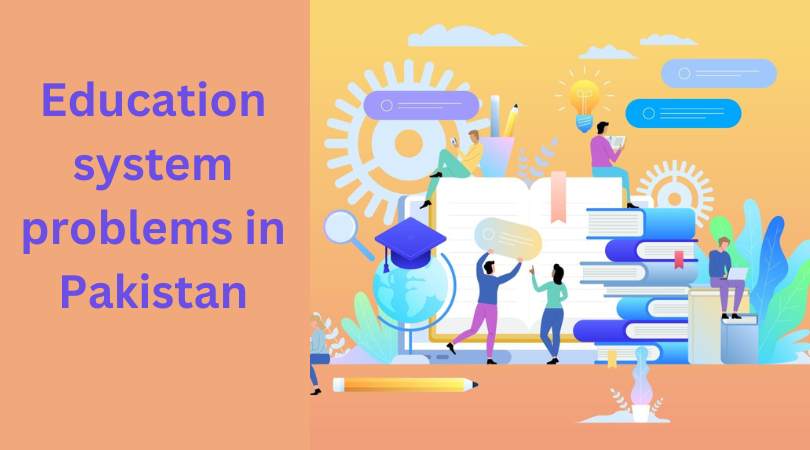1. Introduction
The education system in Pakistan is grappling with multifaceted challenges that hinder its effectiveness in nurturing the nation’s future leaders. From issues of accessibility to quality concerns, the education landscape requires a comprehensive overhaul to address the persistent problems. This article delves into the critical aspects of the education system problems in Pakistan.
2. Lack of Access to Quality Education
A significant hurdle in Pakistan’s education system is the glaring disparity in access to quality education. Rural areas often suffer from a lack of schools, skilled teachers, and necessary resources, leaving a substantial portion of the population without adequate educational opportunities.
3. Gender Disparities in Education
Gender bias remains a prevalent issue, with girls facing disproportionate challenges in accessing education. Cultural norms, early marriages, and limited awareness contribute to the gender gap, perpetuating inequality in educational opportunities.
4. Outdated Curriculum and Teaching Methods
The curriculum and teaching methods in Pakistan are often criticized for being outdated and inadequate in preparing students for the modern world. A revamp is essential to align education with the dynamic needs of the global landscape.
5. Insufficient Infrastructure and Resources
Many educational institutions in Pakistan lack the necessary infrastructure and resources, hindering the overall learning experience. Dilapidated buildings, inadequate libraries, and a shortage of teaching aids further exacerbate the problem.
6. Teacher Quality and Training
The quality of teachers is pivotal to a successful education system. However, in Pakistan, issues such as insufficient training, low salaries, and a lack of motivation contribute to a compromised standard of teaching.
7. Examination System Issues
The examination system in Pakistan is often criticized for being overly focused on rote memorization. This method fails to evaluate critical thinking skills and practical application, limiting the holistic development of students.
8. Socioeconomic Factors Influencing Education
Socioeconomic factors play a significant role in shaping educational outcomes. Poverty, inequality, and lack of awareness create barriers that prevent many children from pursuing education, perpetuating a cycle of disadvantage.
9. Limited Focus on Practical Skills
The education system in Pakistan often prioritizes theoretical knowledge over practical skills. This imbalance leaves graduates ill-prepared for the demands of the workforce, hindering their employability.
10. Language Barriers in Education
Language disparities create challenges for students, especially those from non-urban areas. The dominance of English as the medium of instruction can hinder understanding and limit educational access for some.
11. Inadequate Education Budget Allocation
Insufficient budget allocation to the education sector is a recurring issue. Adequate funding is crucial for improving infrastructure, training teachers, and implementing innovative educational approaches.
12. Political Interference in Educational Institutions
Political interference in educational institutions can compromise academic integrity. The influence of political agendas can disrupt the smooth functioning of schools and universities, impacting the quality of education.
13. Lack of Technical and Vocational Education
The absence of a robust technical and vocational education system limits career choices for students. Integrating practical skills training can empower individuals and contribute to economic development.
14. Absence of Career Counseling
The lack of career counseling services in schools leaves students uninformed about potential career paths. Guidance in choosing suitable professions is crucial for maximizing individual potential.
15. Solutions for a Revitalized Education System
Revamping the education system requires a concerted effort from policymakers, educators, and society. Investing in infrastructure, enhancing teacher training, updating curricula, and promoting inclusive policies are key steps towards creating a more effective educational framework.
Conclusion
Addressing the problems in Pakistan’s education system is imperative for fostering a society that thrives on knowledge and innovation. Through collaborative efforts and strategic reforms, Pakistan can pave the way for a brighter and more equitable future.
Frequently Asked Questions
How can gender disparities in education be mitigated?
Gender disparities can be reduced through awareness campaigns, policy changes, and community engagement to promote equal educational opportunities for all.
What steps can be taken to improve teacher quality in Pakistan?
Improving teacher quality involves comprehensive training programs, competitive salaries, and fostering a positive teaching environment to attract and retain talented educators.
How can the examination system be reformed for better outcomes?
Reforms should focus on evaluating critical thinking and practical skills, moving away from rote memorization to encourage holistic student development.
What role can technology play in addressing education system challenges?
Technology can enhance access to education, facilitate remote learning, and provide innovative teaching methods, contributing to a more inclusive and effective system.
How can individuals contribute to improving the education system in Pakistan?
Individuals can contribute by supporting education-related initiatives, volunteering, and advocating for policy changes that prioritize the enhancement of the education system.
==================




